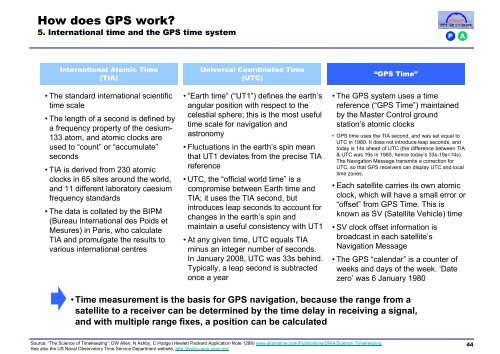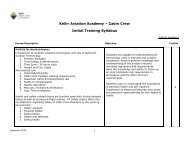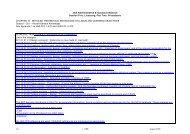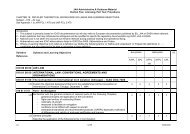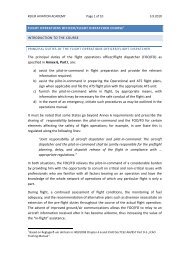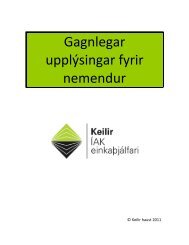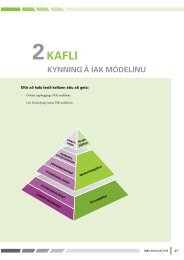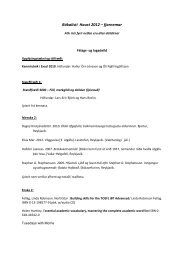RNAV Training Manual - Keilir
RNAV Training Manual - Keilir
RNAV Training Manual - Keilir
You also want an ePaper? Increase the reach of your titles
YUMPU automatically turns print PDFs into web optimized ePapers that Google loves.
How does GPS work?<br />
5. International time and the GPS time system<br />
International Atomic Time<br />
(TIA)<br />
The standard international scientific<br />
time scale<br />
The length of a second is defined by<br />
a frequency property of the cesium-<br />
133 atom, and atomic clocks are<br />
used to count or accumulate<br />
seconds<br />
TIA is derived from 230 atomic<br />
clocks in 65 sites around the world,<br />
and 11 different laboratory caesium<br />
ffrequency standards t d d<br />
The data is collated by the BIPM<br />
(Bureau International des Poids et<br />
Mesures) in Paris, who calculate<br />
TIA and promulgate the results to<br />
various international centres<br />
Universal Coordinated Time<br />
(UTC)<br />
Earth time ( UT1 ) defines the earth s<br />
angular position with respect to the<br />
celestial sphere; p ; this is the most useful<br />
time scale for navigation and<br />
astronomy<br />
Fluctuations in the earth s spin mean<br />
that UT1 deviates from the precise TIA<br />
reference<br />
GPS Time<br />
P A<br />
The GPS system uses a time<br />
reference ( GPS Time ) maintained<br />
by y the Master Control gground<br />
station s atomic clocks<br />
GPS time uses the TIA second, and was set equal to<br />
UTC in 1980. It does not introduce leap seconds, and<br />
today is 14s ahead of UTC (the difference between TIA<br />
& UTC was 19s in 1980, , hence today y s 33s-19s=14s). )<br />
The Navigation Message transmits a correction for<br />
UTC, so that GPS receivers can display UTC and local<br />
time zones.<br />
UTC, the official world time is a<br />
compromise between Earth time and<br />
TIA TIA; it uses the th TIA second, d bbut t<br />
introduces leap seconds to account for<br />
changes in the earth s spin and<br />
Each satellite carries its own atomic<br />
clock clock, which will have a small error or<br />
offset from GPS Time. This is<br />
known as SV (Satellite Vehicle) time<br />
maintain a useful consistency with UT1 SV clock offset information is<br />
At any given time, UTC equals TIA<br />
minus an integer number of seconds.<br />
broadcast in each satellite s<br />
Navigation Message<br />
In January 2008, UTC was 33s behind. The GPS calendar is a counter of<br />
Typically, a leap second is subtracted weeks and days of the week. Date<br />
once a year zero was 6 January 1980<br />
Time measurement is the basis for GPS navigation, because the range from a<br />
satellite to a receiver can be determined by y the time delay y in receiving g a signal, g ,<br />
and with multiple range fixes, a position can be calculated<br />
Source: The Science of Timekeeping ; DW Allen, N Ashby, C Hodge (Hewlett Packard Application Note 1289) www.allanstime.com/Publications/DWA/Science_Timekeeping<br />
See also the US Naval Observatory Time Service Department website, http://tycho.usno.navy.mil/<br />
44


